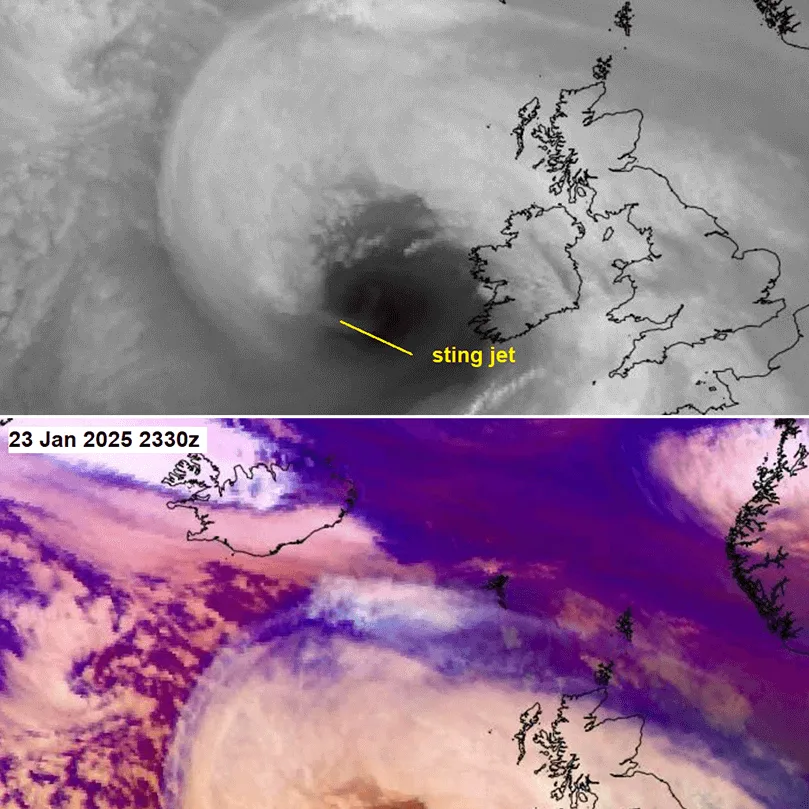Storm Eowyn has unleashed severe weather conditions across Ireland and the United Kingdom, leading to significant damage and disruption. The storm made landfall on January 24, 2025, bringing with it powerful winds that reached up to 90 mph and intense rainfall. In Ireland, officials reported widespread power outages affecting over 100,000 homes and businesses as utility companies struggled to restore electricity amid the high winds. The worst hit areas included counties Galway, Clare, and Kerry, where fallen trees and damaged infrastructure prompted emergency services to respond to numerous incidents throughout the day.
In the UK, particularly in Scotland, the storm’s impact was similarly felt, with rail services disrupted and flight cancellations reported at major airports like Glasgow and Edinburgh. The British Transport Police urged passengers to check travel advisories as crews worked tirelessly to clear blocked lines and restore services. Prime Minister Rishi Sunak stated, “We are closely monitoring the situation and extending our support to local authorities dealing with the aftermath of this severe weather event. Public safety remains our top priority.”
Meteorologists had warned of the storm’s intensity leading up to its arrival, with the Met Office issuing several weather warnings. Forecasters indicated that the storm was expected to linger through January 25, which could further exacerbate the already challenging conditions. Residents were advised to stay indoors and exercise caution when venturing outside as the risks of falling debris and flash flooding persisted. Many schools opted to remain closed, and community centers opened as evacuation shelters.
As the storm moves eastward, authorities continue to monitor its path and prepare for potential further disruptions. Local governments are deploying emergency response teams to assist communities hardest hit by Storm Eowyn and assess the damage sustained during the onslaught of wind and rain. In its wake, the storm has prompted discussions about climate resilience and infrastructure preparedness in the face of increasingly severe weather patterns attributed to climate change.













